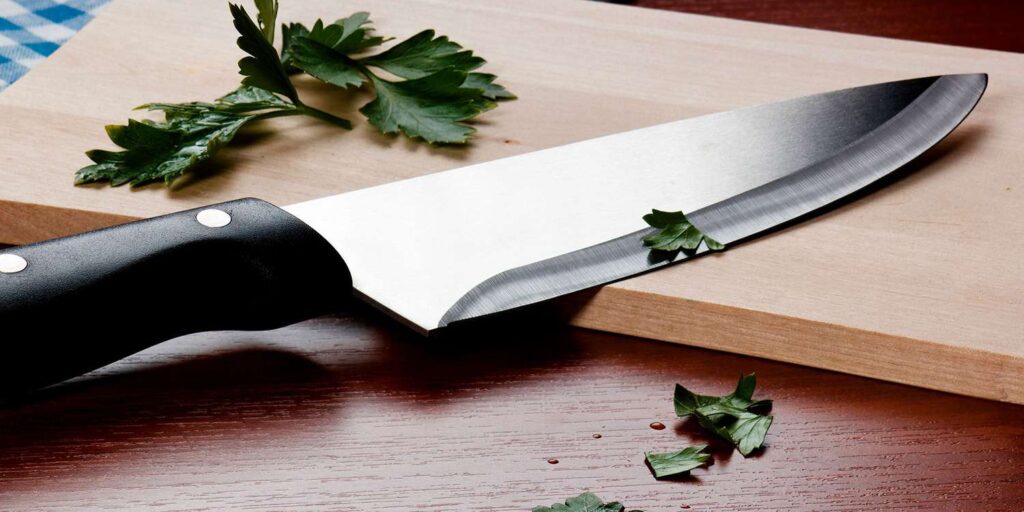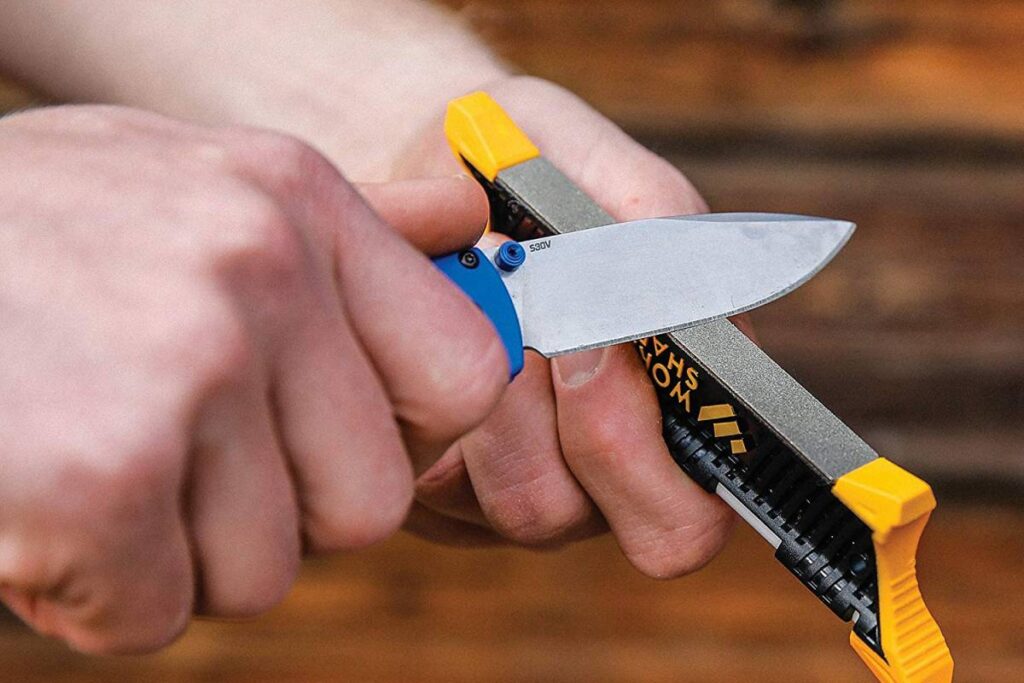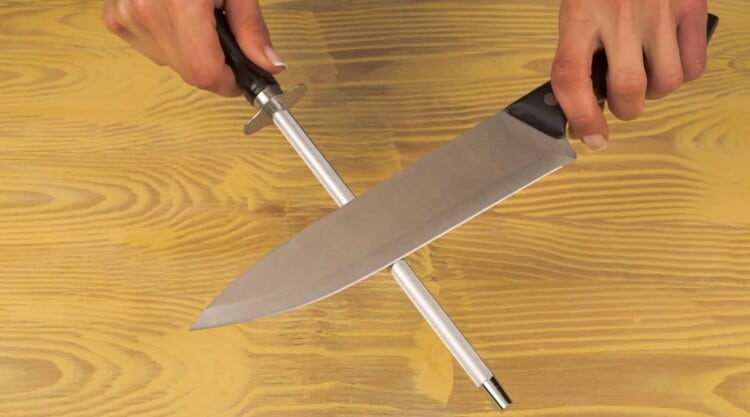Last updated on January 8th, 2024 at 12:27 pm
Pocket knives perform best with sharp blades. Many enthusiasts struggle to find the right pocket knife sharpening angle. We will answer the issue “What angle should I use to sharpen my pocket knife?” in this complete tutorial. Join us as we explore pocket knife sharpening procedures, angles, and professional guidance to help you attain precision and knife longevity.
What is the Importance of Sharpening Angles
It’s important to understand sharpening angles before determining a pocket knife’s angle. The blade’s cutting performance, lifespan, and functioning depend on its sharpening angle.
A blade sharpened at 15 degrees has a finer edge. This sharper edge helps with precise cutting and slicing fragile materials.
However, a blade sharpened at 25 degrees is more durable and resilient, making it suited for heavy-duty activities that require strength and force. Pocket knives function best when sharpness and durability are balanced.
What Angle to Sharpen Pocket Knife: Exploring the Options

Pocket knife sharpening has many angles. Pocket knife sharpening angles are typically 15–25 degrees. Discussing these options:
15-Degree Angle: A 15-degree pocket knife edge is razor sharp. Food preparation and woodworking typically employ this angle for precise cuts.
20-Degree Angle: A 20-degree angle balances sharpness and durability. It is a popular pocket knife angle for general-purpose cutting.
25-Degree Angle: Sharpening your pocket knife at 25 degrees makes it stronger. Chopping wood or processing difficult materials is easier at this angle.
Determining the Ideal Sharpening Angle for Your Pocket Knife

Your pocket knife’s sharpening angle depends on its application, blade material, and personal choice. Step-by-step instructions to find the best angle:
The Knife’s Purpose: Consider your pocket knife’s main use. For precision work, a 15–17-degree angle may work. A higher angle of 18–22 degrees may be better for general-purpose or outdoor activities.
Know the Blade Material: Sharpening angles affect blade materials differently. For a finer edge, stainless steel needs a lower angle, whereas carbon steel needs a greater angle for longevity.
Experiment and Test: Try different angles and test your pocket knife’s cutting ability. Start with a conservative angle and gradually change it until you discover the optimal sharpness-durability balance.
Step-by-Step Guide: Sharpening Your Pocket Knife at the Right Angle

Now that you understand the different sharpening angles and how to choose the right one for your pocket knife, here’s a step-by-step instruction to sharpening your knife:
Gather the Tools: A sharpening stone, honing oil or water, and a cleaning cloth are needed to sharpen a pocket knife.
Prepare the Sharpening Surface: Place the sharpening stone on a sturdy place and fasten it. Following the manufacturer’s recommendations, lubricate the stone.
Hold the Knife Properly: Maintain a firm grip on the pocket knife’s handle. Angle the blade against the sharpening stone.
Maintain Consistency: Keep a steady angle for a uniform edge. To maintain the optimum angle while sharpening, align a sharpening system or guide.
Start sharpening: Place the knife on the sharpening stone and gently glide the blade across the stone. Smoothly touch the stone with the full blade.
Alternate Sides: Alternate sides to maintain balance and symmetry. To sharpen evenly, use equal strokes on either side.
Monitor Progress: Run your finger down the blade’s edge occasionally to evaluate its sharpness. Sharpen until desired.
Honing the Edge: After sharpening the blade, hone it for best cutting performance. Remove burrs and flaws with a fine-grit sharpening stone or honing rod.
Clean and Inspect: Clean and inspect the blade after sharpening and honing. Adjust the edge as needed.
Common Mistakes to Avoid When Sharpening a Pocket Knife

Avoid typical blunders when sharpening a pocket knife to maintain blade quality. Some pitfalls:
Inconsistent Angles: An uneven and inefficient edge results from inconsistent sharpening angles. Be patient and maintain the angle when sharpening.
Overheating: Sharpening with too much pressure might damage the blade. Use mild, controlled pressure for best results.
Skipping Grits: Sharpening stones have different grits for different purposes. Skipping grits or hurrying can ruin the sharpening. Remove nicks and damage with coarser grits, then polish with finer grits.
Ignoring Honing: Honing the blade after sharpening is essential to improving its cutting performance. This process can dull a blade quickly.
Overlooking Maintenance: Proper maintenance keeps your pocket knife sharp. Keep your blade clean and oiled, store it safely, and avoid using it on materials that dull quickly.
Questions (FAQs)
Which angle sharpens a pocket knife best?
The optimal pocket knife sharpening angle varies on blade material, intended use, and personal choice. Sharpening angles should be 15–25 degrees. Higher angles are better for heavy-duty use, whereas lower angles are better for precision.
Pocket knife sharpening: how often?
Sharpening depends on how often and what you do with your pocket knife. Every few weeks or when cutting performance declines, perform regular maintenance sharpening.
However, dull knives are dangerous and inefficient, so sharpen them when they get dull.
Is a sharpening guide reliable?
A sharpening guide can improve consistency. Sharpening guides help you sharpen both sides of the blade at the same angle. This helps beginners and those who seek precise sharpening angle control.
Why sharpen pocket knives at a sharper angle?
Pocket knives sharpened at 25 degrees have various advantages. The blade’s sharper slant makes it strong enough for heavy-duty work.
It can handle chopping wood and other demanding tasks. However, steeper angles lose clarity and precision.
Pocket knife sharpeners?
Pocket knife sharpeners exist. Sharpening systems, guided sharpeners, stones, and rods are examples. Each tool has benefits for different skill levels and preferences. Choose a sharpening tool that meets your needs and offers the precision and control you want.
Conclusion
Finally, sharpening a pocket knife at the appropriate angle ensures precision and blade longevity. You may confidently sharpen your pocket knife by understanding sharpening angles, investigating possibilities, and following a step-by-step guidance.
When choosing a sharpening angle, consider the knife’s purpose, blade material, and personal preference. To keep your pocket knife sharp, avoid typical faults like irregular angles or excessive pressure and prioritise maintenance.
A sharp pocket knife is useful for outdoor sports, everyday carry, and specialised work. Sharpening skills and the appropriate angle can keep your pocket knife ready for combat.
